Experiencing a decline in logging, residents of the Supenaam Creek are returning to farming with new lands being opened as the government digs canals in the area.
“Agriculture is a new venture”, said Secretary of the Combined Farmers Venture, Cheryl Sandy. She said that logging activities in the area – a major economic activity that provided many jobs, is declining and with canals being dug resulting in more lands being accessible, residents are turning to farming. She said that farmers in the area have been receiving help from donor agencies and the government and her group was formed a few years ago to access this assistance. The group, which started with over 100 members, now has about 53 left and comprises farmers along the Supenaam River as well as the communities of Bethany and Mashabo.
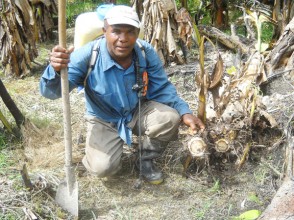
While the new lands are being opened up, veteran farmers told this newspaper during a visit to the area last week, that they continue to face problems experienced by other farmers across the country such as diseases, low prices for their produce, high input costs and praedial larceny.
Bissoon, who farms at Plantation De Hoop, Supenaam Creek said that wild animals also destroy his crops and persons steal his produce.
Although he had reported the stealing of his produce to the Aurora Police Station many times, the police say that they cannot do anything, he said. Bissoon, who has been farming since 1980, currently cultivates three acres of plantains, cassava and other crops. He said that since 1995, he had applied for a firearm licence but was unsuccessful.
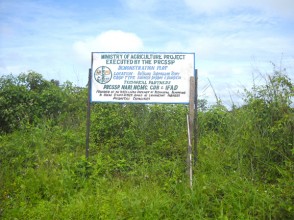
He sells his produce within the region and said that prices are low. In addition, he said, for the past couple of years, “dry leaf” disease stunted plantains.
While he said that some extension officers have visited, the drug they advised him to buy did not eradicate the disease and was expensive so he stopped. On the Government’s Grow More Food campaign, he said that it had no major impact on him though he had received some assistance through a Canadian Hunger Fund (CHF) project that saw farmers receiving a certain quantity of items like fertilizers. He also said that if a farmer wants to expand, one of the issues hampering is the lack of labour, and when available, the heavy price demanded.
However, he said, about two years ago, two canals were dug in the area where he farms, enabling better drainage and less flooding than had previously occurred.
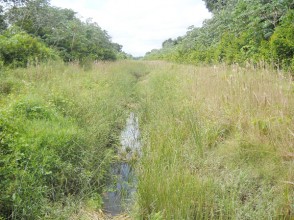
Jerome Couchman, although battling a “dry leaf” disease that withers the leaves of his plantains, exudes optimism as he explained that this is his last plantain crop and he now plans to get into eddoes and “inter-crop farming”. He farms at Mora Landing, Supenaam Creek and has been doing so for the past 25 years. Currently, he cultivates two and a half acres of land with plantains and “every little thing”.
Couchman sells his produce to hucksters at Supenaam and said that the prices are “very bad”. He said that prices are better in Parika but he is unable to produce the quantities required to make a trip to Parika feasible. If the amount of labour he puts in is taken into account, “at the end of the day, you really working at zero”, Couchman said. “I really got to sit down and think how to run this farm”.
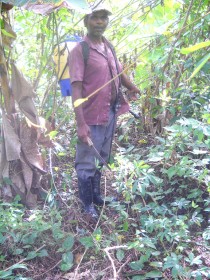
He noted that drugs to control diseases such as “dry leaf” are very expensive and says it would be better if officials can somehow offer farmers better prices. Couchman noted too that there is another disease affecting the plantains: the “mocha disease…they call it the black disease; is a terrible disease”.
He said that the Farmers Association speaks about drugs but is not saying when they will purchase and offer them to farmers at better prices. He noted that officials from the Agriculture Ministry had visited his farm in relation to the “dry leaf” disease and “they check it, tek picture and then they gone. They give you a list of drugs to buy”. The only help he has received in recent times is from the CHF project, he said. “You got to use your own lil commonsense”, Couchman said. “But I love farming. You know how nice I does feel coming in the morning looking after these plants here”.
He said that farmers need a lot of help. “It lil stressing you out, getting the returns man”, he said. “These things does come and try to frustrate you but you does got to put back in the land”. He noted that one of the objectives of the Grow More Food Campaign is to get famers to produce at a level for export but he noted that a lot of requirements have to be met. Couchman said that he cannot meet these because it calls for a lot of finance and he does not have that. However, he is hoping to expand his farm in the future.

Doing some chores at the Supenaam waterside, Sandy said that through the CHF, farmers in the area had received help in the form of planting materials, spray cans and drugs and the group even benefitted from a cassava mill. As well, she said, there are training programmes ongoing. Sandy said that farmers in Supenaam plant mostly provision, plantains, bananas and greens and she plants five acres in stages and is planning to start an acre shortly. She said that the digging of the canals gave a boost to farming since previously, the area flooded easily.
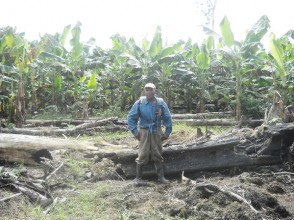
However, she lamented, prices are low. “You the farmer invest so much money and time but you getting the least”, she said. “You selling the produce but they (hucksters) setting the price”. Sandy said that better prices can be garnered at Parika but transportation to get there is an issue. She said that at the moment, no one from the group is exporting though some have attended a workshop regarding processing for export. Through, the Grow More Food campaign, she added, some seeds were received for distribution to farmers and also a bottle each of a drug for the “dry leaf” disease. However, Sandy said that an increase in the acreage farmers cultivate is difficult because they do not have the capital.
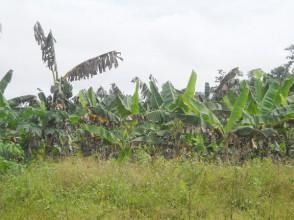
Through the Poor Rural Communities Services Support Project, farmers in the area were involved in a project cultivating the bullnose pepper as well as pumpkins. Sandy said that they had setbacks with the bullnose pepper as it was not as sturdy as the local ones. “It easy to catch disease”, she said. She said too that the pumpkin grew bigger than the size required for export. She said that they replanted the bullnose pepper several times and “half came out and half did not”. She also said that it was attacked by rats. Currently the plot that was used is overgrown but Sandy said that they hope to start cultivating the plot very soon but with different crops.
Meanwhile, she predicted that farming would take the place of logging. Because of the Low Carbon Development Strategy, logging would diminish, Sandy said. She noted that the area, particularly Bethany, has been involved in logging in a major way. “Agri is a new venture”, she said, adding that right now people are returning to farming.
Options
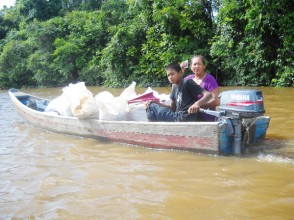
In Bethany, Dexroy Couchman, is one of those persons. He worked in the logging industry but about six months ago, he started a farm because he wanted to stop logging, he said. He is examining his options and the farm he started is on a small scale but he has bigger plans, he said.
But, like other veteran farmers, Joycelyn Russell noted that farmers face a lot of challenges. She points to the “dry leaf” disease as an example. “This thing mek me feel like going away from this place”, she said. “Me farm get lick up right now”. She plants one and a half acres of plantains, bananas and other crops and said that she has not gotten any help as it relates to combating the disease. Another challenge is the low price, she said. Russell said that the campaign has not impacted on her and she continues to farm in the way she always has. She reiterates that the “dry leaf” disease has affected persons badly. ‘Help must be coming later”, she wryly smiles.

The “dry leaf” disease is also a problem faced by Doodnauth Ragubar called ‘Lall’ of De Hoop, Supenaam who said that he has received no assistance to combat the disease. He has been farming since 1970 and currently plants about two acres, he said. He also spoke of low prices and the high cost of inputs like fertilizers. He has not heard about the Grow More Food campaign but noted that “farmers ah try” and now they might get better land because of the drainage canals being dug. “We got to try make much with it”, he said.




